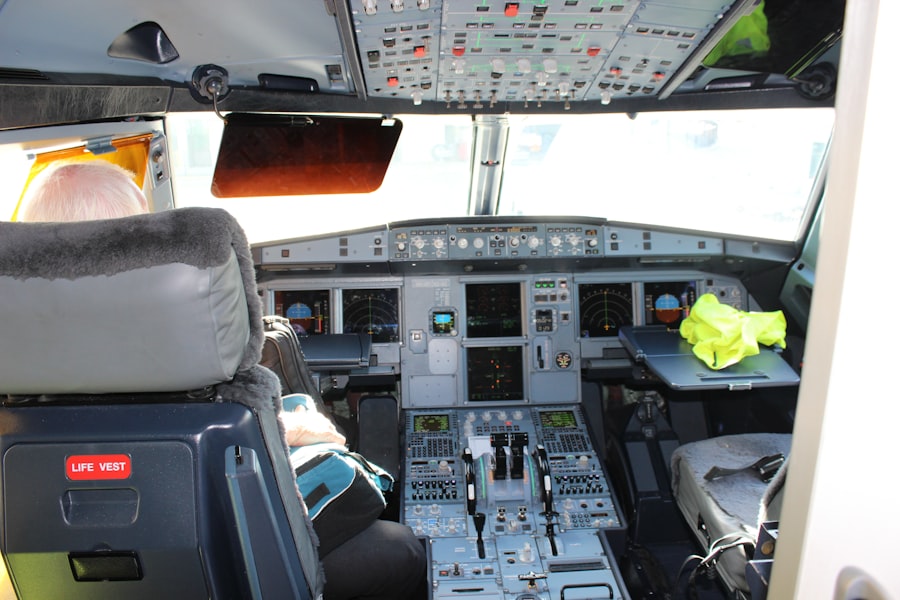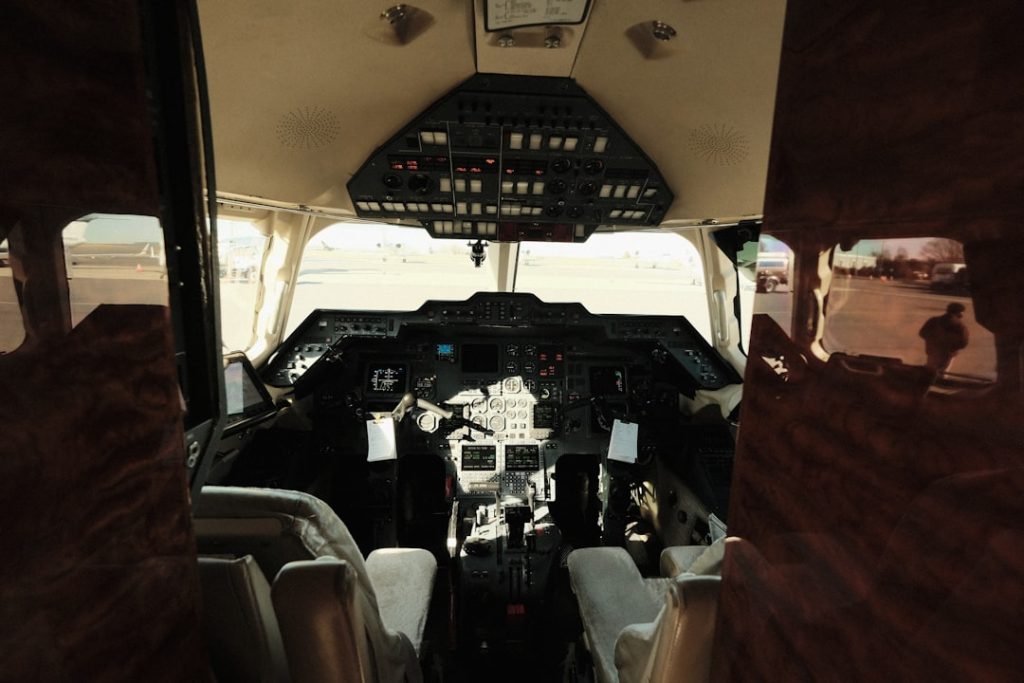The Airbus A350-900 is a remarkable aircraft that has redefined long-haul travel since its introduction into commercial service in 2013. As part of the A350 family, which includes the A350-1000 and the A350-800, the A350-900 stands out for its blend of advanced technology, fuel efficiency, and passenger comfort. Designed to compete with Boeing’s 787 Dreamliner and 777 series, the A350-900 has quickly gained popularity among airlines and passengers alike.
With its sleek design and innovative features, it represents a significant leap forward in aviation engineering. Airbus’s commitment to sustainability and efficiency is evident in the A350-900’s design philosophy. The aircraft is constructed primarily from composite materials, which not only reduce weight but also enhance durability.
This modern approach to aircraft design allows for improved aerodynamics and performance, making the A350-900 a game-changer in the competitive landscape of commercial aviation. As airlines continue to seek ways to reduce operational costs while meeting environmental regulations, the A350-900 emerges as a frontrunner in the quest for a more sustainable future in air travel.
Key Takeaways
- The Airbus A350-900 is a state-of-the-art aircraft known for its advanced design and technology features.
- Its fuel efficiency and environmental impact make it a standout in the aviation industry, with reduced emissions and lower operating costs.
- Passengers can enjoy a comfortable and amenity-filled experience on board the A350-900, with spacious cabins and modern amenities.
- The A350-900 boasts impressive range and performance capabilities, making it a versatile and reliable option for airlines.
- With its market impact and competitors, the A350-900 is poised to shape the future of air travel and continue to evolve with future developments and variants.
Design and Technology Features
The design of the Airbus A350-900 is characterized by its distinctive wide-body fuselage and advanced wing structure. The wings are particularly noteworthy, featuring a unique wingtip design known as “sharklets,” which enhance aerodynamic efficiency. These winglets reduce drag during flight, contributing to the aircraft’s overall fuel efficiency.
The wings are also designed to flex during flight, allowing for better performance in various weather conditions and improving fuel consumption. In terms of technology, the A350-900 is equipped with state-of-the-art avionics and systems that enhance safety and operational efficiency. The aircraft features fly-by-wire technology, which replaces traditional mechanical controls with electronic systems, allowing for more precise handling and reduced pilot workload.
Additionally, the cockpit is equipped with large digital displays that provide pilots with real-time data on flight parameters, navigation, and system status. This modern cockpit design not only improves situational awareness but also streamlines communication between crew members.
Fuel Efficiency and Environmental Impact

One of the standout features of the Airbus A350-900 is its exceptional fuel efficiency. Powered by two Rolls-Royce Trent XWB engines, the aircraft boasts a 25% reduction in fuel burn compared to previous generation aircraft of similar size. This significant improvement is achieved through a combination of advanced engine technology and aerodynamic design.
The Trent XWB engines are designed to operate at higher bypass ratios, which enhances their efficiency while reducing noise levels. The environmental impact of the A350-900 is also noteworthy. With its reduced fuel consumption comes a corresponding decrease in carbon emissions, making it one of the most environmentally friendly aircraft in its class.
The A350-900 produces approximately 25% fewer CO2 emissions per passenger compared to older models, aligning with global efforts to combat climate change. Furthermore, the aircraft’s quieter engines contribute to lower noise pollution around airports, addressing concerns from communities near flight paths.
Passenger Comfort and Amenities
| Category | Metrics |
|---|---|
| Seating | Seat pitch, width, and recline |
| Entertainment | Screen size, variety of content |
| Amenities | Blankets, pillows, headphones |
| Food and Beverage | Quality, variety, and service |
| Cleanliness | Cabin and lavatory cleanliness |
Passenger comfort is a top priority for airlines operating the Airbus A350-900, and this aircraft delivers on that front with a range of amenities designed to enhance the travel experience. The cabin features a spacious layout with wider seats and larger windows compared to traditional aircraft designs. The cabin altitude is also set lower than that of many other aircraft, which helps reduce passenger fatigue during long-haul flights.
Airlines have the flexibility to configure the A350-900’s interior according to their brand identity and customer preferences. Many carriers have opted for modern cabin designs that include mood lighting, advanced in-flight entertainment systems, and improved air quality through advanced filtration systems. The cabin is designed to minimize noise levels, creating a more serene environment for passengers.
With these thoughtful design elements, the A350-900 has garnered praise from travelers for its comfort and overall flying experience.
Range and Performance Capabilities
The Airbus A350-900 is designed for long-haul operations, with a maximum range of approximately 8,000 nautical miles (about 14,800 kilometers). This impressive range allows airlines to operate non-stop flights on some of the longest routes in the world, connecting cities that were previously only accessible through one or more layovers. The aircraft’s performance capabilities are further enhanced by its efficient engines and aerodynamic design, enabling it to climb quickly and cruise at high altitudes.
In addition to its range, the A350-900 is capable of operating from shorter runways than many other long-haul aircraft. This versatility opens up new opportunities for airlines to serve secondary airports and expand their route networks. The aircraft’s performance characteristics make it an attractive option for airlines looking to optimize their operations while providing passengers with convenient travel options.
Market Impact and Competitors

Since its entry into service, the Airbus A350-900 has made a significant impact on the commercial aviation market. Airlines around the world have embraced this aircraft for its operational efficiency and passenger appeal. Major carriers such as Qatar Airways, Singapore Airlines, and Delta Air Lines have incorporated the A350-900 into their fleets, recognizing its potential to enhance their long-haul offerings.
In terms of competition, the A350-900 faces challenges from Boeing’s 787 Dreamliner series and the 777 family. While both Boeing models offer similar capabilities in terms of range and passenger comfort, the A350-900 distinguishes itself through its advanced materials and technology. Airlines often weigh factors such as acquisition costs, operational efficiency, and passenger experience when selecting an aircraft for their fleet.
The ongoing rivalry between Airbus and Boeing continues to drive innovation in commercial aviation as both manufacturers strive to meet evolving market demands.
Future Developments and Variants
Looking ahead, Airbus has plans to further develop the A350 family with new variants and enhancements. The A350-1000, an extended version of the A350-900, offers increased capacity and range, catering to airlines seeking to maximize their passenger load on popular routes. Additionally, Airbus is exploring potential upgrades to existing models that could include improved engines or enhanced cabin features.
The future of the A350 series may also involve advancements in sustainable aviation technologies. As airlines increasingly prioritize environmental responsibility, there is potential for Airbus to incorporate alternative fuels or hybrid-electric propulsion systems into future variants of the A350 family. These developments would align with global efforts to reduce aviation’s carbon footprint while maintaining high standards of performance and passenger comfort.
The Future of Air Travel with the Airbus A350-900
The Airbus A350-900 represents a significant milestone in the evolution of commercial aviation. With its cutting-edge design, fuel efficiency, and passenger-centric features, it has set new standards for long-haul travel. As airlines continue to embrace this aircraft for its operational advantages and environmental benefits, it is poised to play a crucial role in shaping the future of air travel.
As we look toward the future, innovations in technology and sustainability will likely drive further advancements in aircraft design. The A350-900 stands at the forefront of this transformation, embodying a commitment to efficiency and passenger comfort that will define air travel for years to come. With ongoing developments in aviation technology and an increasing focus on environmental stewardship, the Airbus A350-900 is not just an aircraft; it is a symbol of progress in an industry that continually seeks to improve the way we connect across distances.


